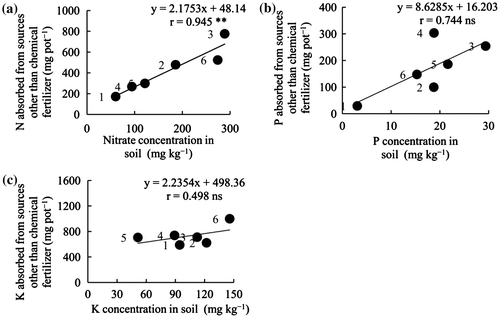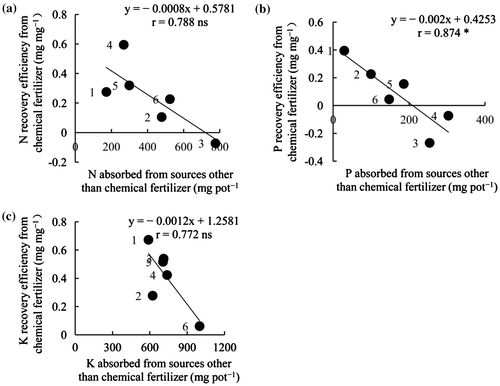Figures & data
Table 1. Descriptive statistics of cultivation in vinyl house fields and properties of soils used for pot experiment.
Table 2. Different application amounts of N, P, and K chemical fertilizer.
Table 3. Dry matter productions of stem lettuce under different applications of chemical fertilizer.
Table 4. N, P, and K outputs under different application of chemical fertilizer.
Table 5. N, P, and K balances under different application of chemical fertilizer.
Figure 2. Relationships between soil Nitrate, P, and K and N, P, and K absorbed from sources other than chemical fertilizer by stem lettuce. Numbers on the left of dots represent the numbers of the soils for pot experiment. Note. **significant at P < .01; ns, not significant.

Figure 3. Relationships between N, P, and K absorbed from sources other than chemical fertilizer and N, P, and K recovery efficiencies of chemical fertilizer. Numbers on the left of dots represent the numbers of the soils for pot experiment. Note. *significant at P < .05; ns, not significant.

Figure 4. Relationships between N, P, and K absorbed from sources other than chemical fertilizer and responses of dry matter production to N, P, and K absorbed from chemical fertilizer. Numbers on the left of dots represent the numbers of the soils for pot experiment. Note. **significant at P < .01; ns, not significant.

